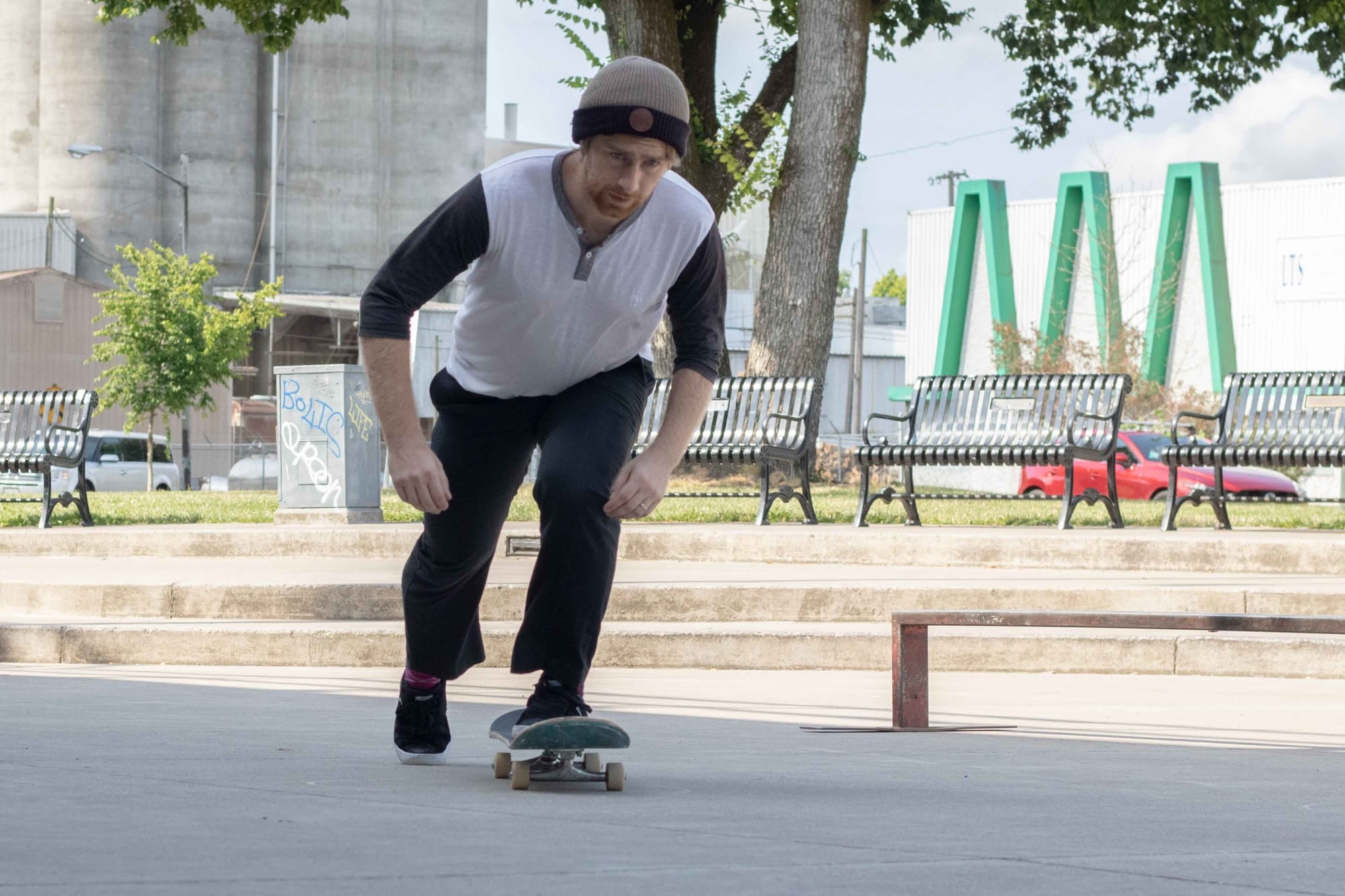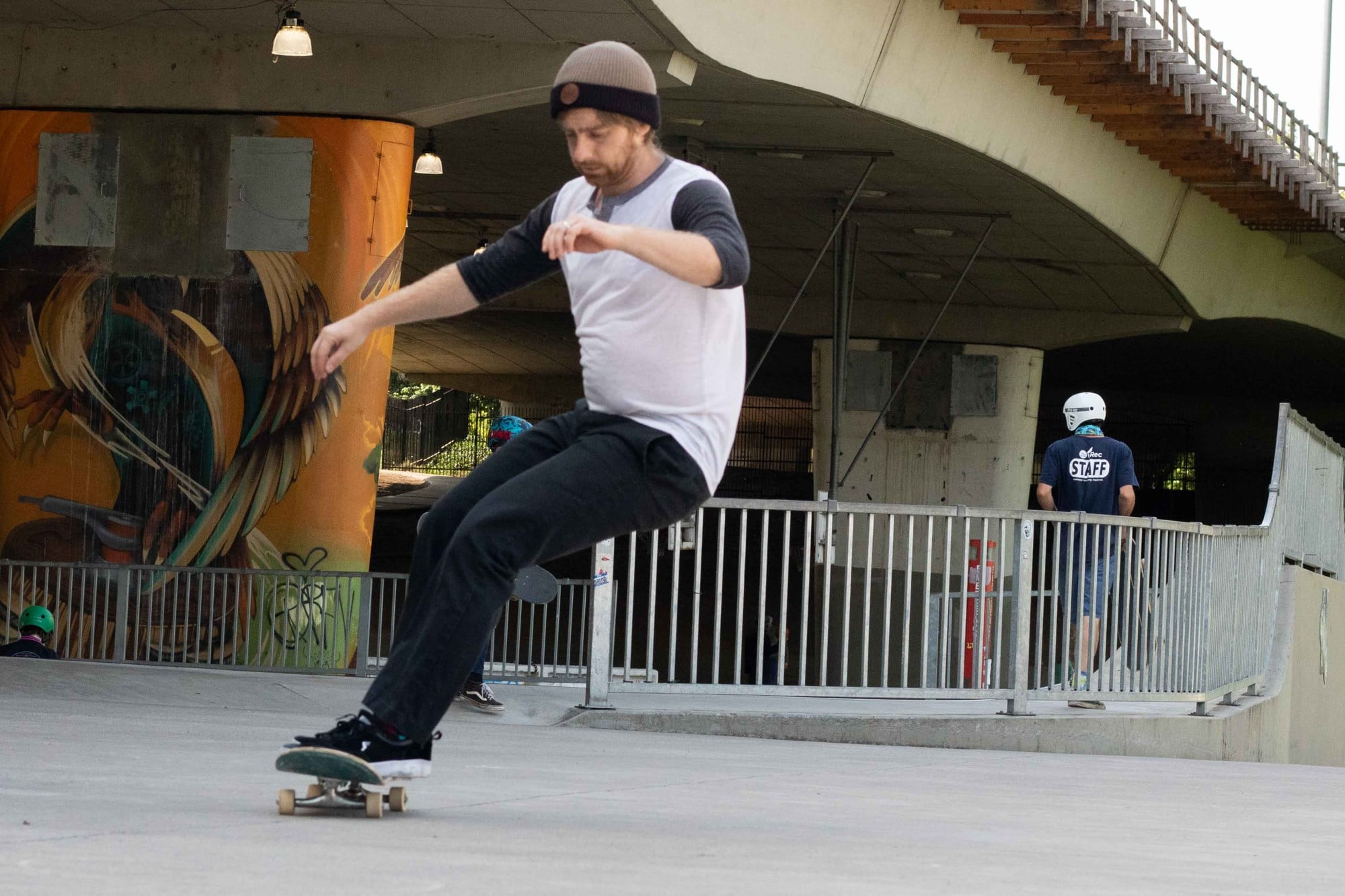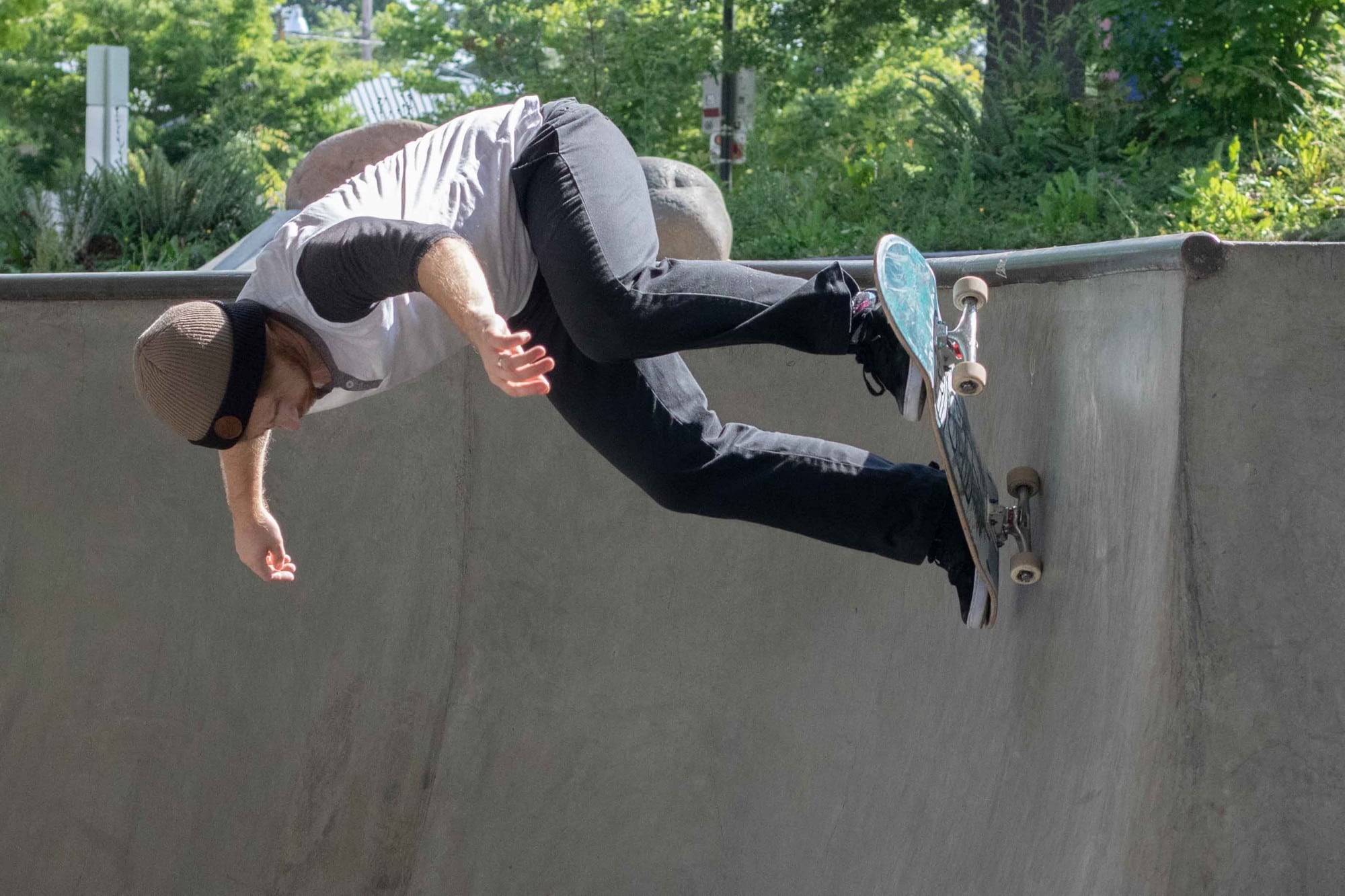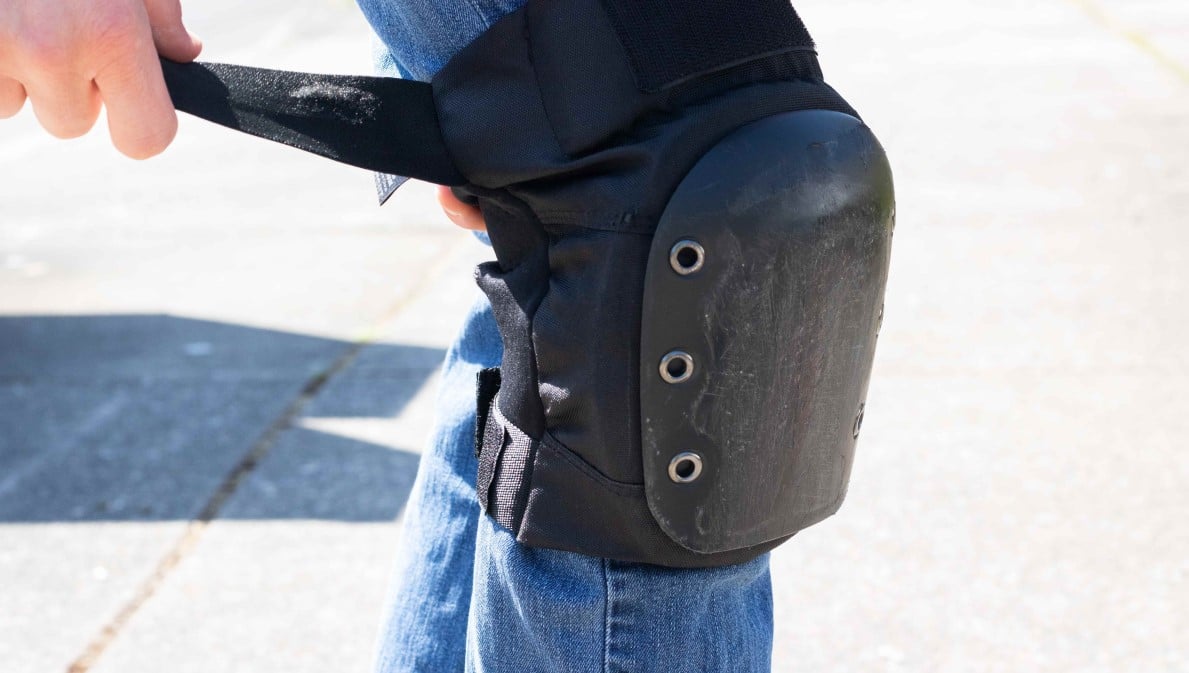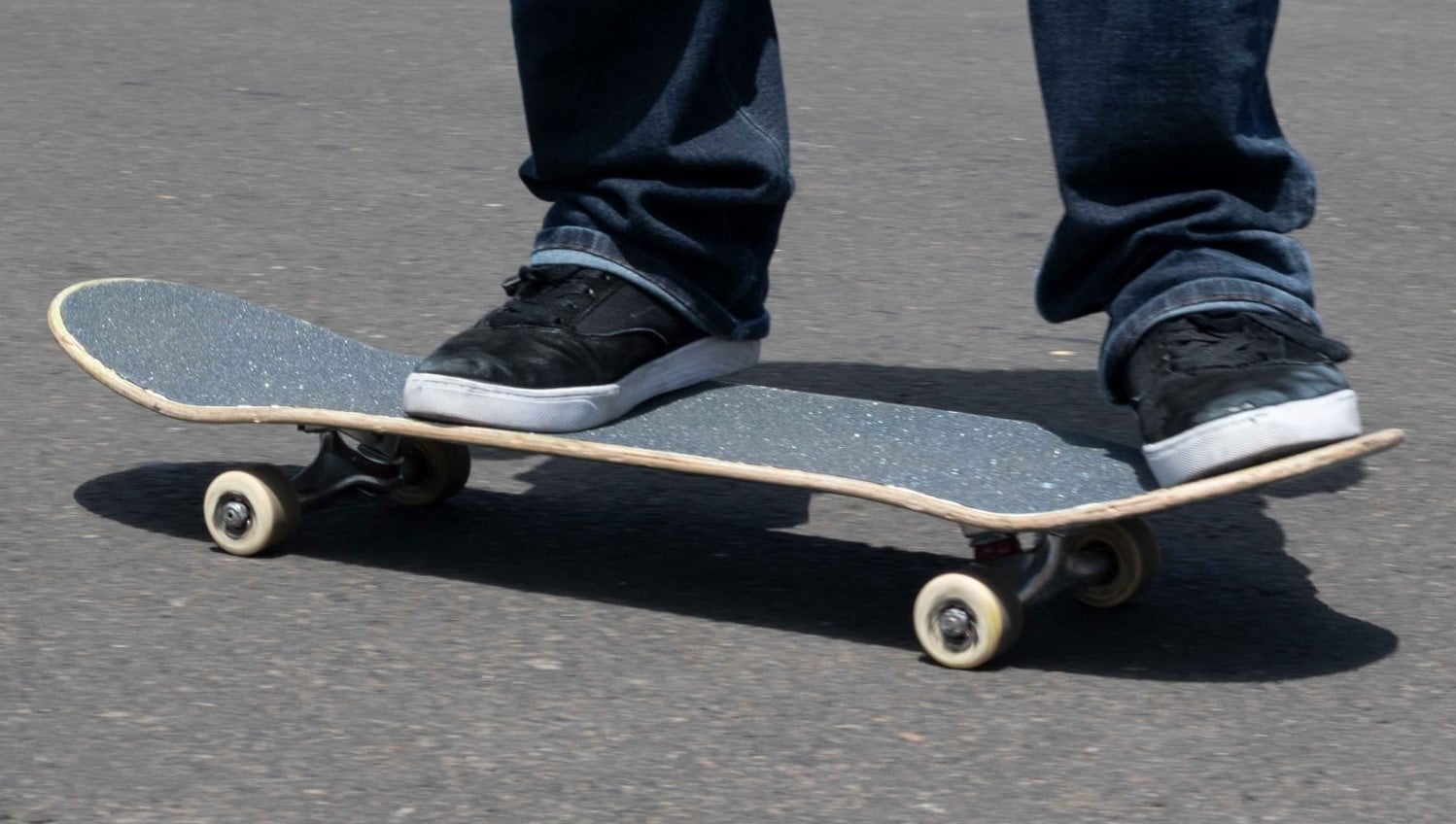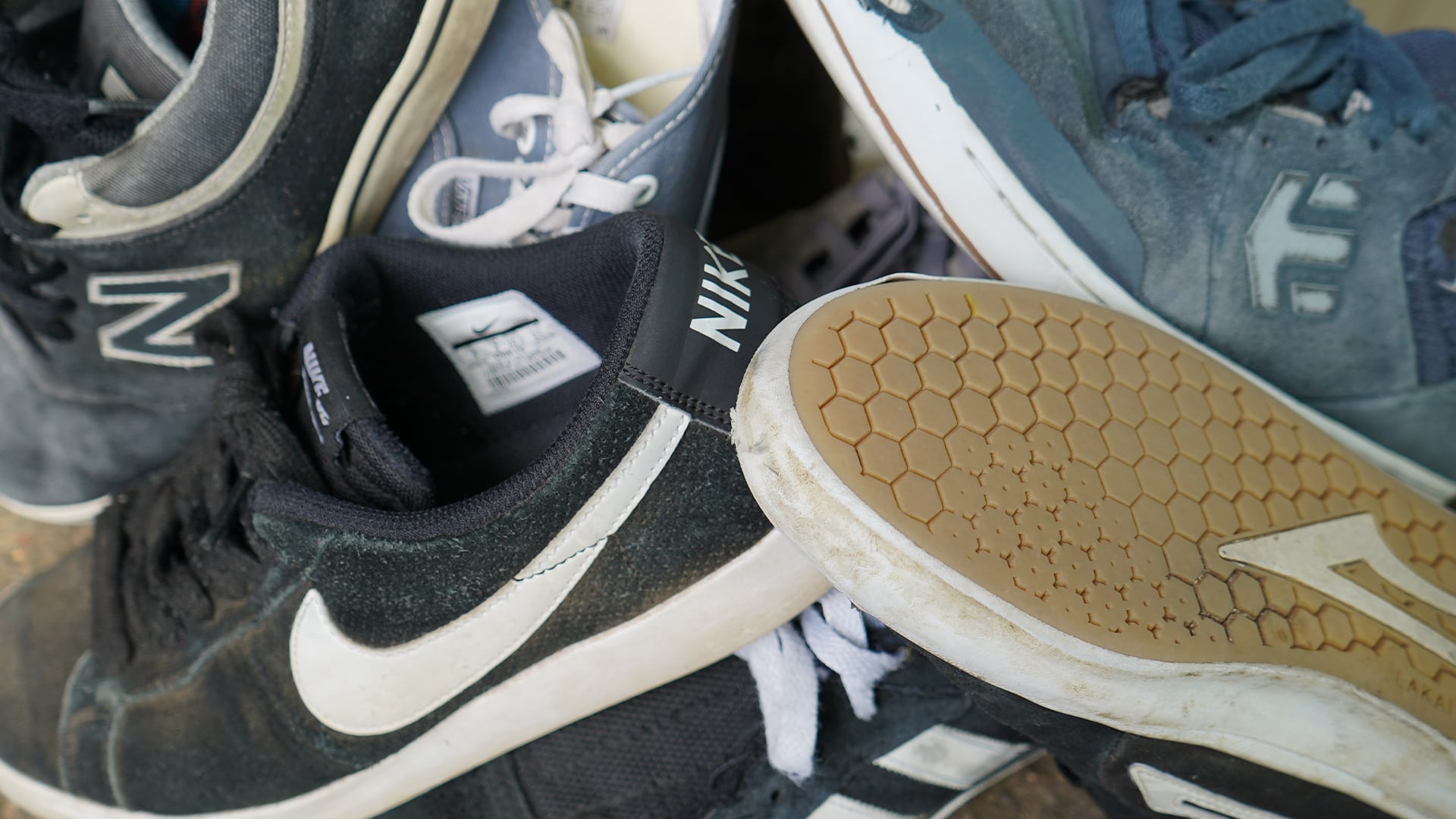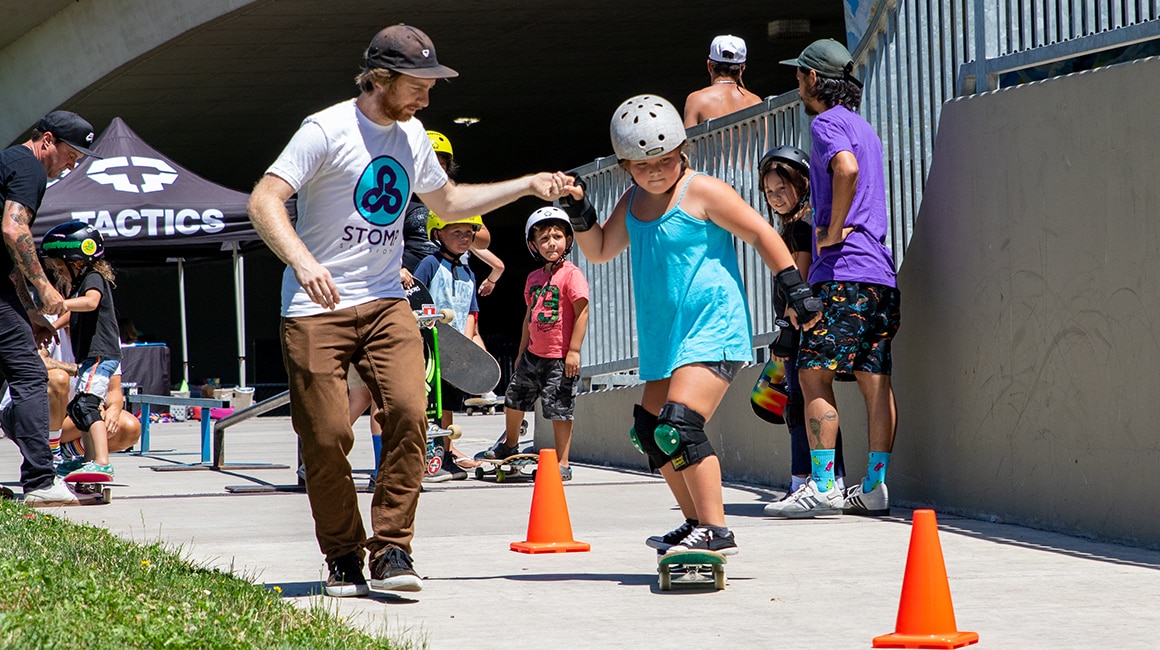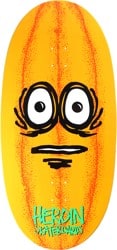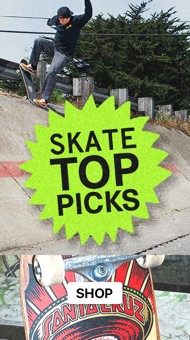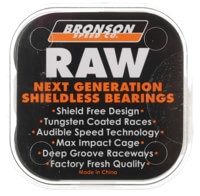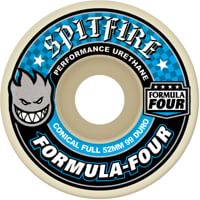How to Skateboard: A Beginners Guide
Skateboarding is a fun and exciting sport that can be enjoyed by people of all ages. As a beginner, it is important to have a good understanding of the fundamentals. This guide will provide you with tips and techniques on how to start skateboarding and improve your basic skills.
Here's what we'll cover:
Skateboard Stance (Regular or Goofy)
Determining the correct stance is essential when learning to skateboard as it affects the overall balance and control of the board. The two main stances in skateboarding are regular and goofy. Regular stance means that the skater feels more comfortable with their left foot in front, while goofy stance means that the skater feels more comfortable with their right foot in front.
To determine which stance is more natural for you, you can try the sliding test. Imagine yourself on a hardwood floor or ice with socks on and try to slide. Which foot do you instinctively lead with? This will give you a good indication of which stance you might be. However, it's important to try both stances and see which one feels more natural for you.
Your front foot is responsible for providing stability on the board, and many times the foot that is easier for you to stand on its own will be your front foot. It's important to choose the stance that feels more comfortable and natural for you, as this will make learning to skateboard easier and more enjoyable. Once you have determined your stance, you can practice placing your feet on the board in the correct position and start learning basic techniques such as pushing, turning, and stopping.
Regular
Regular footed means you feel more comfortable with your left foot in front.
Goofy
Goofy footed means you feel more comfortable with your right foot in front.
Where to Learn How to Skate

Finding the right place to learn how to skateboard is important for your own safety. A smooth and lesser-used sidewalk or bike path is a great place to start. Alternatively, an empty street or parking lot can also be a good option, as long as it's free from obstacles and hazards. However, if the sidewalk has huge cracks or is in poor condition, it's best to find a smoother surface to avoid tripping or falling.
It's important to learn the basics of pushing and riding around before going to a skatepark. Skateparks can be crowded and chaotic, and it may not be the best place for beginners to learn. It's always a good idea to practice in a less busy area until you feel comfortable on your board. If a skatepark is the only option, try to find an area where you won't get in the way of more experienced skaters. This could mean finding a quieter area of the park or waiting until a less busy time of day to practice.
Learning to skateboard takes time and patience, so it's important to take things slow and not get discouraged. Starting on a smooth surface and practicing basic techniques will help you build confidence and improve your skills. As you progress, you can gradually challenge yourself by trying new tricks and riding on different surfaces. We do suggest that when learning to skateboard you should always wear proper safety gear, including a helmet, knee pads, and elbow pads, to protect yourself from injury.
Beginner Skateboarding Tips
1. Bend Your Knees
Maintaining a low and relaxed stance is essential for all skateboarding tricks as it gives you the ability to adjust your balance quickly in any situation. By bending your knees, you can absorb shocks and maintain your balance on the board, making it easier to control and maneuver.
2. Be Determined
Practice and dedication are key to learning how to skate. Don't expect to be good right away, as skateboarding can be difficult and takes time to master. Remember that the challenge is part of what makes skateboarding so gratifying and keep pushing yourself to improve.
3. Be Ready to Fall
Falling is an unavoidable part of skateboarding. It's important to invest in a helmet and protective gear such as knee pads and elbow pads to protect yourself from injury. Being prepared to fall and knowing how to do so safely can help you keep skating and falling for life.
4. Use Quality Equipment
Skateboards from department stores may have poor-quality parts and not perform as well as boards from actual skate companies. This can be frustrating and make learning to skate discouraging. Invest in quality gear from top skate brands to ensure that your skateboard performs well and is durable. This includes your skate deck, but also your trucks, wheels and skate hardware.
5. Be Confident
Don't worry about how you look or how good you are. Focus on skating hard, trying new tricks, and being mindful of others. As you progress and push your limits, you will earn respect from your fellow skaters, no matter how basic the trick may be. Remember that skateboarding is about having fun and expressing yourself on the board.
How to Push on a Skateboard
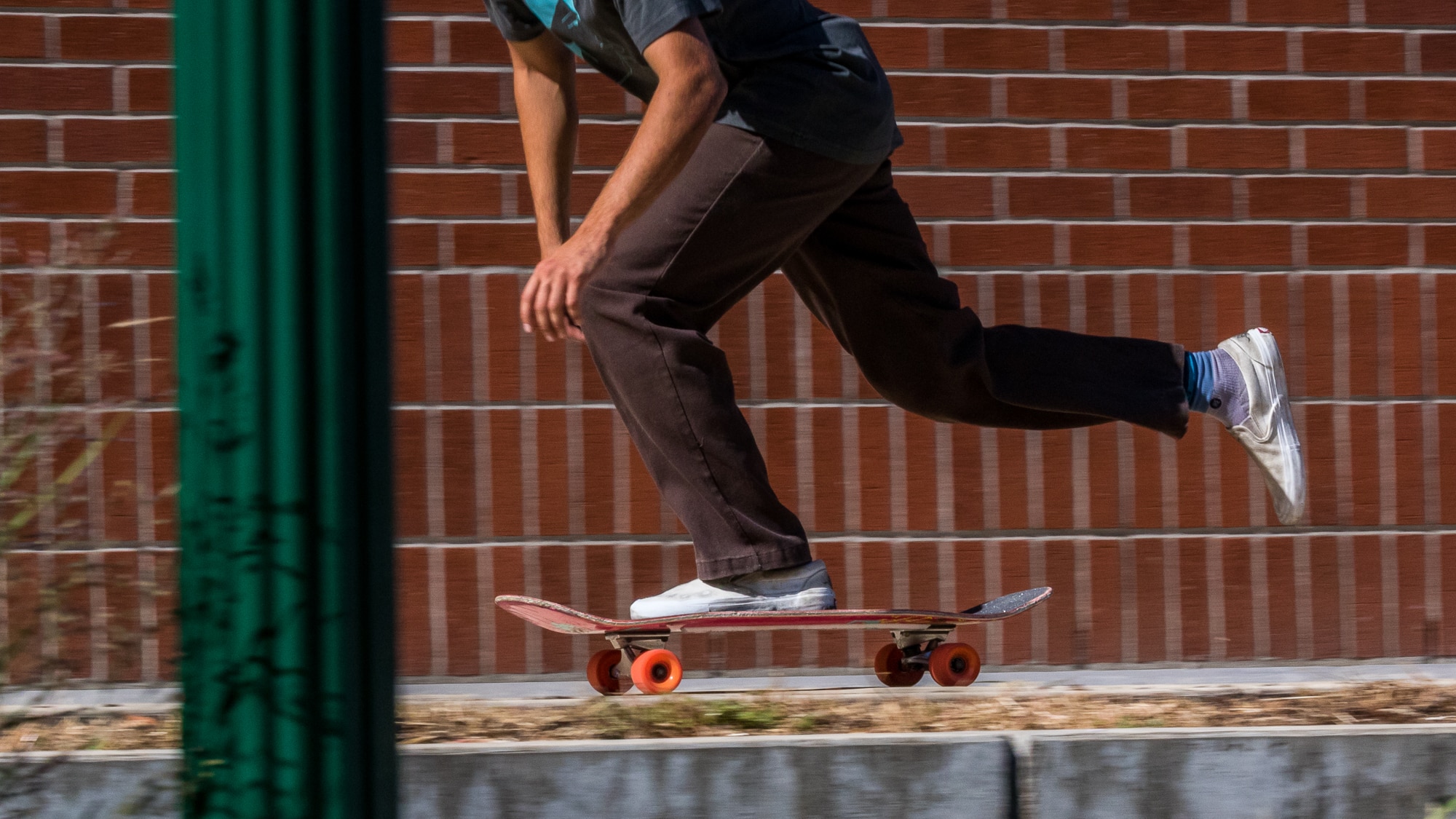
Learning how to push on a skateboard is one of the first steps for all beginners looking to get started. Here's a step-by-step guide on how to push on a skateboard:
-
Place your front foot: Position your front foot at a 30-degree angle near your front hardware bolts, about mid-board.
-
Bend your front knee: To allow your back leg to reach the ground, bend your front knee. This stance should be relaxed and stable.
-
Push off with your back foot: While balancing all your weight on your front foot, reach down and push off with your back foot. Make sure to push off at a slight angle behind you to get more power and a longer push.
-
Return your back foot to your board: Once you've completed your push, bring your back foot up to the board and position it at a slight angle near the back hardware bolts. This stance will help you maintain balance and control as you ride.
TIP: A helpful exercise for beginners is to practice balancing only on your front foot. This can help you build strength and stability, making it easier to push and ride. With enough practice, you'll be able to push continuously whenever you need to without losing your balance
How to Turn on a Skateboard
Carving Turns
Turning is very intuitive and will come naturally as you spend time on a skateboard. Your trucks are designed to turn your board as you lean from side to side. Here are some tips:
- Bend your knees and get low before leaning into your turn.
- Lead with your shoulders and apply pressure with your toes or heels in the direction that you want to turn towards.
- Once you complete the turn, bring your body back to its natural stance and roll away.
TIP: Adjust your kingpin tightness until you find what feels best to you. Looser trucks give you less stability, but turn more easily. Tighter trucks give you more stability, but restrict your ability to turn.
Kick Turns
Kick turns allow you to turn sharply at slow speeds and are very helpful for getting around obstacles or switching directions on a ramp. We recommend first trying this trick on flat ground without rolling.
- Place your back foot on the kick tail and lean back slightly to lift the front wheels off the ground. This allows you to rotate the front of the board in the direction that you wish to turn.
- As you lift, lead the with your shoulders and torso. Your board will turn in the direction that you point your head, shoulders and hips.
- Once you complete the turn, reapply weight to your front foot and roll away.
How to Stop on a Skateboard
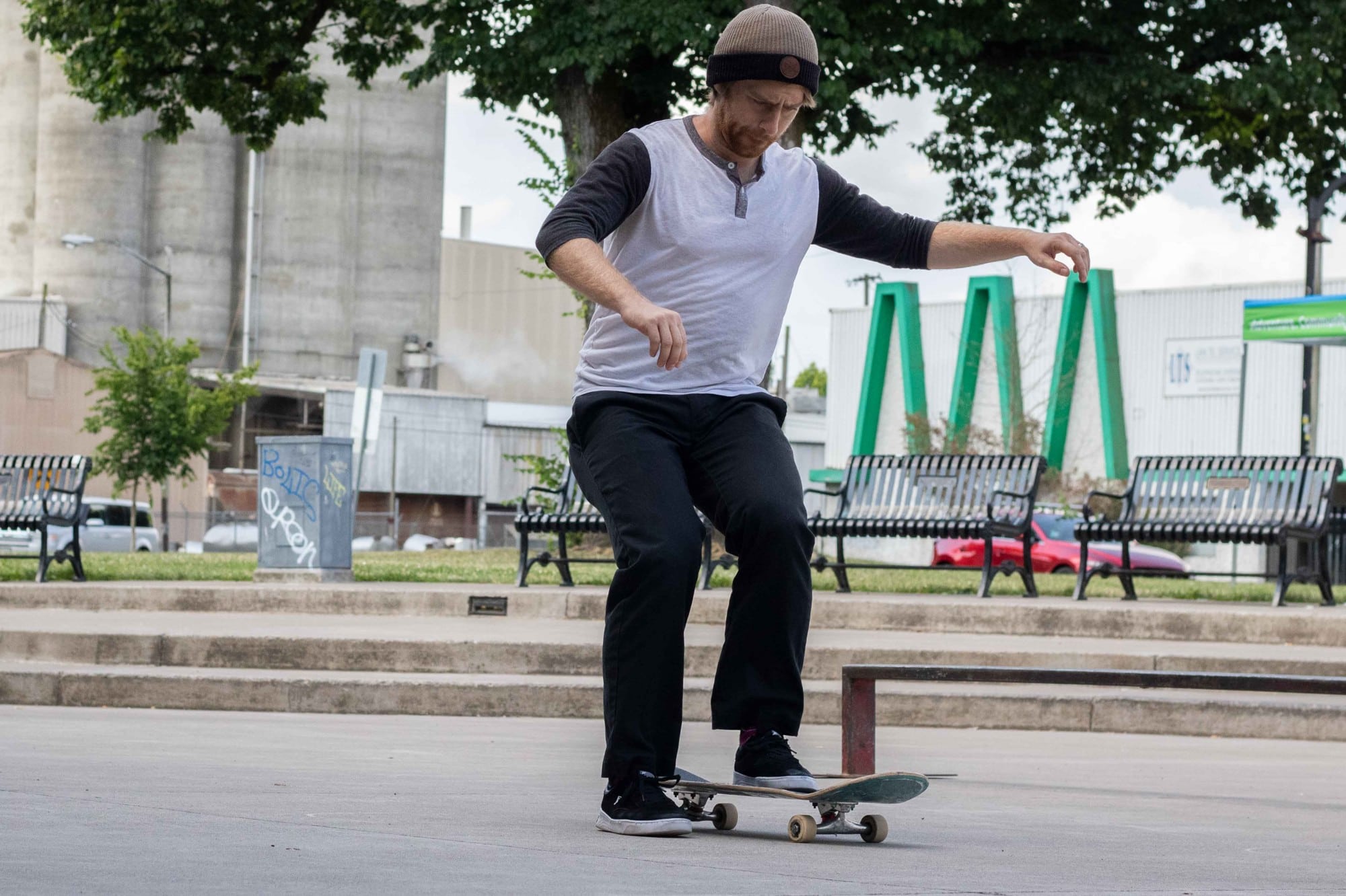
The most basic way to stop on a skateboard is foot braking, which involves dragging your foot on the ground. Here are the steps to properly execute a foot brake:
-
Begin by shifting your weight onto your front foot and bring your back foot down to the ground.
-
Instead of pushing, drag the sole of your shoe gently on the ground while keeping most of your weight on your front foot.
-
Once your foot makes contact with the ground, you can apply more pressure to slow down more quickly.
-
Continue to hold this position until you come to a stop or put your foot back on the board once you've reached your desired speed.
It's important to note that abruptly stomping on the ground can also slow you down quickly, but it's not recommended as it's more likely to throw you off balance and off your board. Always try to execute a smooth and controlled foot brake to avoid any accidents.
How to Throw Down a Skateboard
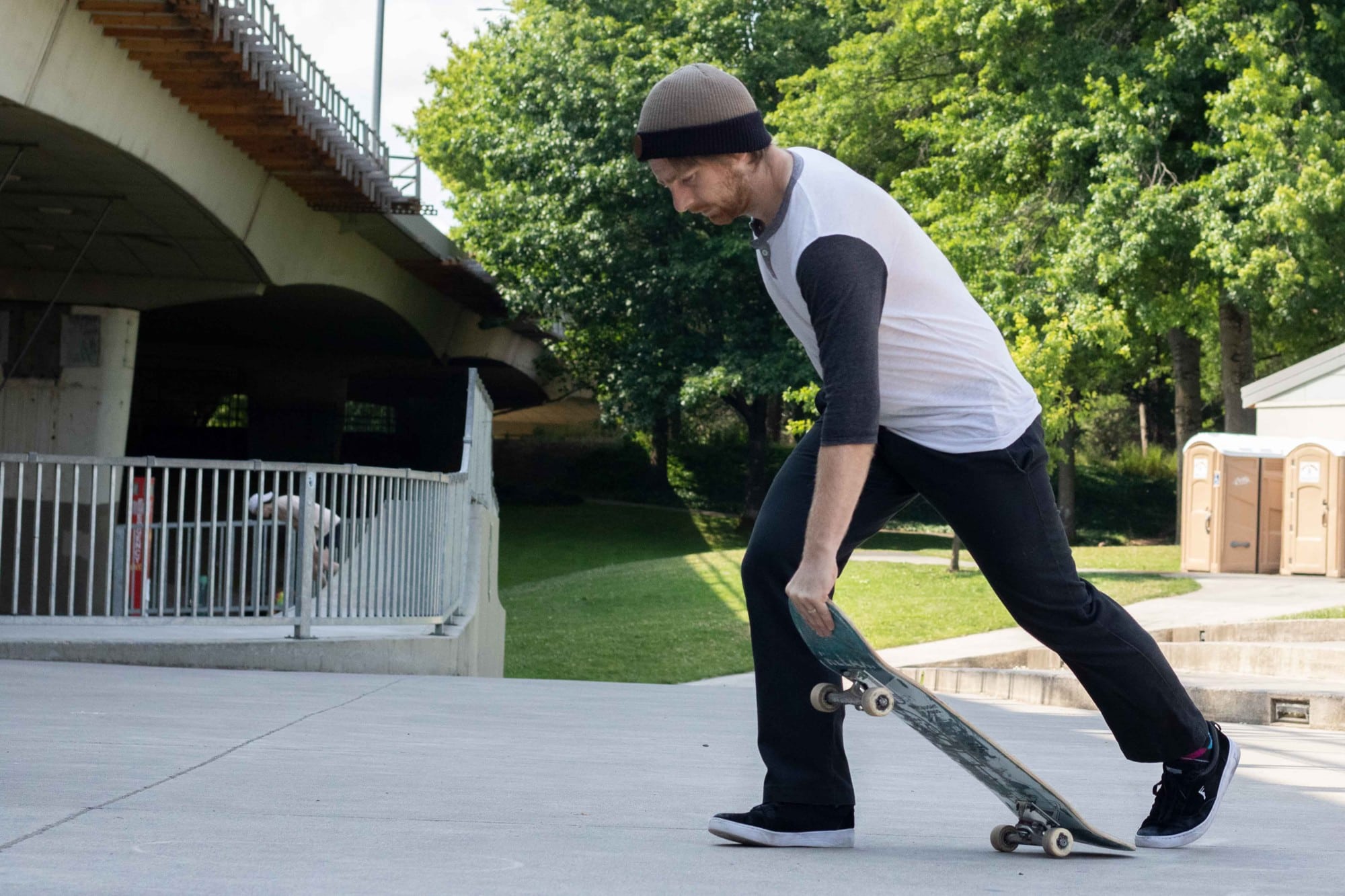
Learning how to throw down your board is an essential skill in skateboarding. Once you master this, you can get started with some speed without having to lay down your board and push from a dead stop.
1. Hold the nose of the board with the arm that’s on the same side as your front foot. So if you’re regular, hold it with your left hand, and if your goofy hold it with your right hand.
2. Take a step forward with your pushing foot and extend your arm holding the board, letting it hang in front of your front leg. As you start your next step lower the board and drop it under your front foot so you can turn that step into the first push.
3. Try to get your front foot into place so you can just start riding without having to readjust your feet a bunch. It might look and feel clunky at first, but eventually, it will be second nature and you’ll be able to throw down and step onto your board at a full sprint.
How to Ollie on a Skateboard
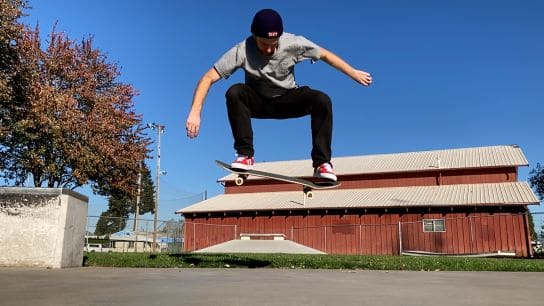
The ollie is the most fundamental trick in skateboarding, and it is used to jump over obstacles, onto ledges, and onto rails. Here's how to do it:
-
Begin riding on your skateboard, with your front foot near the middle of the board and your back foot on the tail.
-
Bend your knees and crouch down slightly, preparing to jump.
-
Quickly pop the tail of your board down against the ground with your back foot, while simultaneously sliding your front foot towards the nose of the board.
-
As the tail hits the ground, jump off of your back foot and slide your front foot upwards towards the nose of the board, leveling out the board in mid-air.
-
Keep your knees bent as you land back on the board, with both feet landing at the same time.
TIP: Practice the motion of popping the tail down and sliding your front foot before attempting to jump. Start with small hops and work your way up to higher jumps. Learning to ollie can take time and practice, so don't get discouraged if it doesn't come easily at first. Keep practicing and you'll get there!
Keep Learning
Still Have Questions?
If you're still curious about how to skateboard or just have questions about skateboards, rest assured that we have the resources to help you out. Our customer service team is highly knowledgeable and can answer any questions you may have about these shoes or other skateboard equipment. You can easily reach out to them by phone or message.
Additionally, if you are in Portland, Eugene, or Bend, feel free to visit one of our local shops and speak to one of our friendly and helpful retail employees. They'll be more than happy to assist you and provide any information or guidance you need. Don't hesitate to reach out to us - we're here to help!
Customer Service:
Call us toll-free at 888.450.5060
Text us at: 888.450.5060
Monday - Friday, 8 a.m. - 6 p.m. Pacific Time
Saturday - Sunday, 9 a.m. - 5 p.m. Pacific Time
